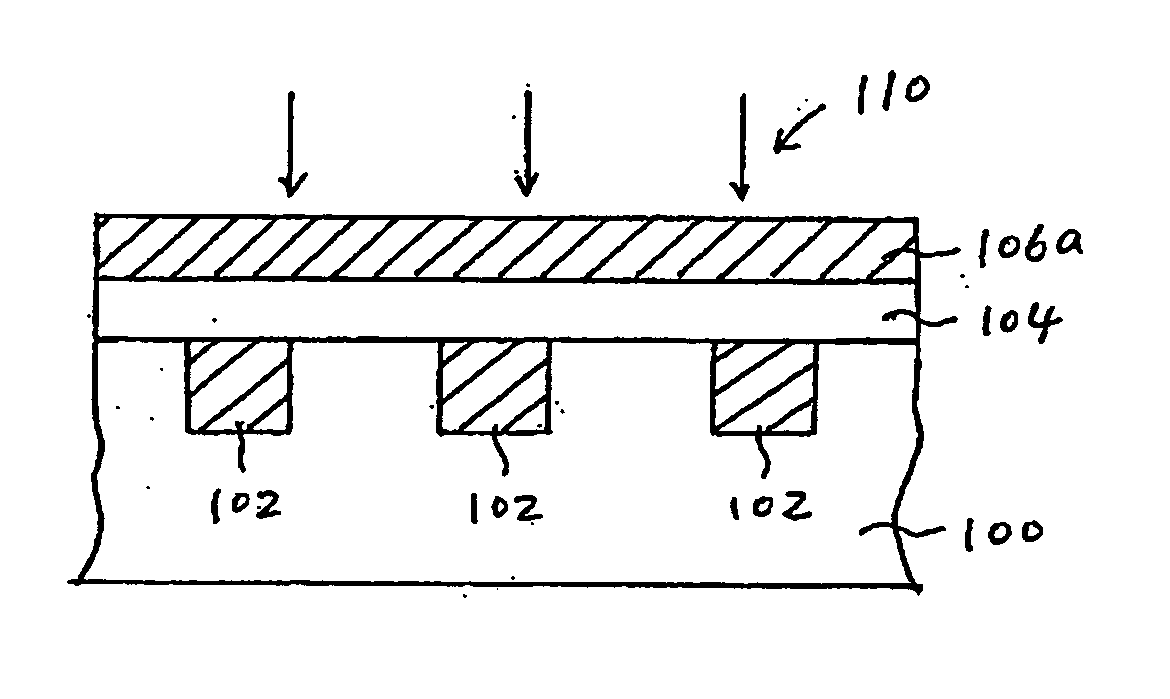Method for suppressing boron penetration by implantation in P+ MOSFETS
a technology of boron penetration and implantation, which is applied in the direction of semiconductor devices, basic electric elements, electrical appliances, etc., can solve the problems of reduced channel length, unintended and undesirable leakage current in the channel region, and undesired shi
- Summary
- Abstract
- Description
- Claims
- Application Information
AI Technical Summary
Benefits of technology
Problems solved by technology
Method used
Image
Examples
Embodiment Construction
[0012] Reference will now be made in detail to the present embodiments of the invention, examples of which are illustrated in the accompanying drawings. Wherever possible, the same reference numbers will be used throughout the drawings to refer to the same or like parts.
[0013]FIGS. 1A-1D are cross-sectional views of a structure formed with a method consistent with one embodiment of the present invention. Referring to FIG. 1A, the method of the present invention commences with providing a silicon substrate 100 and forming a plurality of isolation regions 102 between active areas (not shown) in substrate 100. Conventional techniques for insulating individual devices, such as local oxidation of silicon (LOCOS) and shallow trench isolation (STI), may be used to create isolation regions 102. Next, a gate oxide layer 104 is formed over substrate 100 and isolation regions 102 to a suitable thickness. Gate oxide layer 104 may be grown or deposited over substrate 100 with any conventional m...
PUM
 Login to View More
Login to View More Abstract
Description
Claims
Application Information
 Login to View More
Login to View More - R&D
- Intellectual Property
- Life Sciences
- Materials
- Tech Scout
- Unparalleled Data Quality
- Higher Quality Content
- 60% Fewer Hallucinations
Browse by: Latest US Patents, China's latest patents, Technical Efficacy Thesaurus, Application Domain, Technology Topic, Popular Technical Reports.
© 2025 PatSnap. All rights reserved.Legal|Privacy policy|Modern Slavery Act Transparency Statement|Sitemap|About US| Contact US: help@patsnap.com


